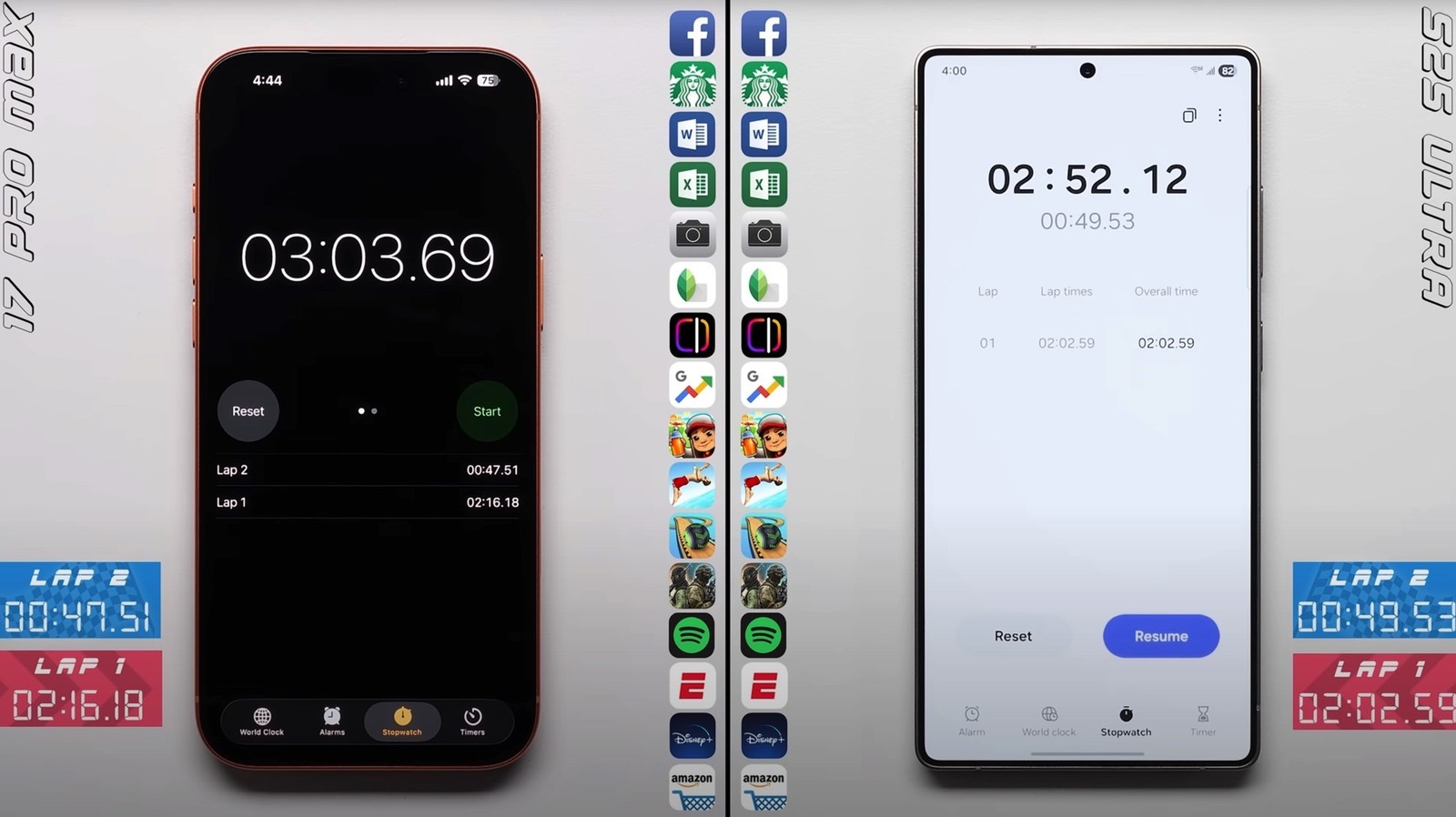The iPhone 17 Pro and iPhone 17 Pro Max feature Apple’s A19 Pro chip paired with 12GB of RAM and at least 256GB of storage. The new Pros also feature vapor chamber cooling, a first for the iPhone, to help maintain stable performance for longer periods. The A19 Pro is Apple’s newest flagship chip, and the iPhone 17 Pro Max benchmarks show the processor is ahead of the competition. But benchmark performance does not guarantee the iPhone’s supremacy in real-life speed tests.
The Galaxy S25 Ultra crushed the iPhone 16 Pro Max in such a comparison back in February, when Samsung launched the Galaxy S25 series. The result was surprising, considering that newest iPhone usually outperform the newest Galaxy S flagship. Fast-forward to late September, and YouTube channel PhoneBuff put the iPhone 17 Pro Max and Galaxy S25 Ultra through the same speed test, wondering whether the new iPhone would beat its main rival. After all, the iPhone 17 Pro Max features an even better chip, the A19 Pro.
The speed test, seen in the video below, reached a similar conclusion, which might surprise some people. The Galaxy S25 Ultra was faster than the iPhone 17 Pro Max, and that’s an exciting development for two reasons. First, the Galaxy S26 Ultra will feature Qualcomm’s Snapdragon 8 Elite Gen 5, which should outperform the Galaxy S25 Ultra. Second, the pressure is on Apple to deliver next-generation A-series chips that can beat Qualcomm chips in speed tests.
What is a real-life speed test, and how accurate is it?
Plenty of creators might release comparison videos like the ones above. They aim to replicate real-time smartphone use by opening the same set of apps on each device during the first lap, which measures how long each handset takes to load web apps, photo and video editing apps, and games. The second lap involves opening the same apps from the phone’s memory and measuring how long the process takes.
Put differently, the test aims to recreate regular smartphone use. We open and reopen apps regularly on our devices, flipping through them for various purposes. We use light web apps and more resource-intensive ones. We play games, and we take and edit photos. The Galaxy S25 Ultra finished the first lap about 13 seconds ahead. The iPhone 17 Pro Max was two seconds faster in the second lap, but not enough to win the test.
The difference between other speed tests and PhoneBuff’s lies in the methodology. PhoneBuff uses a robot to open the same set of apps on the iPhone 17 Pro Max and Galaxy S25 Ultra. To ensure the test is as objective as possible, the YouTuber has the two phones running in similar conditions, including screen brightness, room temperature, and proximity to the Wi-Fi point. Therefore, PhoneBuff’s tests might be more objective than similar clips found on social media.
While the Galaxy S25 Ultra is the clear winner in this test, iPhone 17 Pro and iPhone 17 Pro Max users should not worry about performance issues. The new iPhones are fast and reliable. They’ll offer great performance, and the extra cooling should maintain stable performance for longer. The only way to observe the speed differences in the video above is to use both phones.








